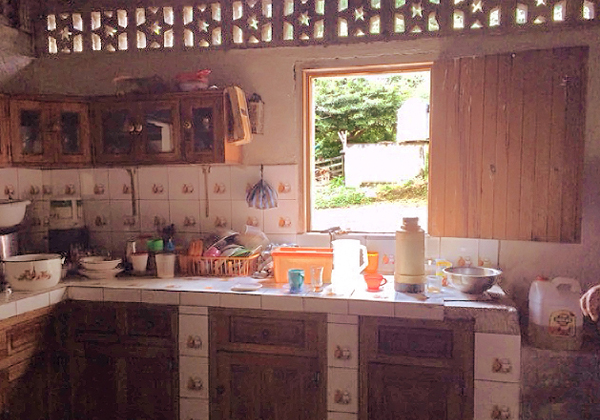
In past trips to visit Root Capital coffee clients in the “field,” I generally went to the actual field – that is, the coffee farm, where I was overseeing one impact study or another. When we’d get to a farmer’s home, we’d greet the woman of the house, and sometimes her daughter by her side, and off we’d go, usually with men, to visit the coffee plot and learn about the current production.
In recent studies, although we’ve been interviewing female producers, and identifying barriers that these women face (with fascinating results), we have not spent much time with the wives of male producers, who are still the majority of women in Latin American coffee communities.
My latest trip to the “field” was refreshingly different. A few weeks ago, as part of the Coffee Quality Institute’s workshop on gender equity, visitors from the U.S. had the privilege of spending a morning with women in local coffee communities. While some went to the field to work with female farmers, two of us got to accompany two housewives, Mariela in her 50s and Beatriz in her 20s, getting a view from the kitchen, where much of women’s invisible work takes place.
Here’s what we learned:
At 4am, Mariela and Beatriz wake up to brew coffee and make tortillas for the men to eat before they go to the farm. When we arrive shortly after breakfast, the women are washing the dishes and cleaning, and beginning to prepare beans and rice over the fire for the next meal. (Even though Mariela’s son bought her a gas oven and hooked it up, it stands unused because Mariela says she likes the fire and is used to it, even if it’s affected her vision over the years.)
As Mariela and Beatriz cook, we watch them keep an eye on the window. As each man – Mariela’s husband, her two sons and Beatriz’s husband – returns, Mariela or Beatriz prepares and carries over a plate of rice, beans, plantains and chicken.

When it’s time for lunch and we ask the women if they’ll eat with us, they blush; Mariela says she doesn’t sit to eat.
After lunch, the process begins anew: washing, cleaning and food prepping, and so on until 9pm.
What do you do in your free time, we ask. They laugh, because there isn’t a lot of it. When we ask again, Mariela says, when she is able to, at night or on the weekend, she goes to the Evangelical church. “I like it because I love sitting.”
Beatriz, who works as a teacher on Saturdays, says she’d like to work more outside the house, as a teacher (it’s been hard to find a job close by), and also by selling more makeup through catalogues, which she’s done for a few years now. “It’s more of a fun activity than a source of income,” she says.
We ask if the women want to be more involved in coffee production. (After all, we are here to explore gender equity in coffee). Interestingly, both say they’d rather not. Why? Because if they were, they would be working in the field on top of working in the home. Mariela recalls her work on the farm 10 years ago, during a time when her family had less money. In those days, she cooked for the family (and several workers) and also worked a shift in the field. Life has improved tremendously since then, as the family’s coffee sales have grown. Now she can focus on her household responsibilities.
***
For a long time, I’ve appreciated the work done by women in agriculture. And in the last few years, we’ve begun, through our impact studies, to explore the barriers that women face to becoming producers, joining cooperatives and maximizing the benefits of membership.
Despite our studies to date, that morning in Mariela’s kitchen, I saw and felt, more deeply than ever before, the all-consuming nature of Mariela and Beatriz’s household work, and how fundamental it is for the coffee production of their households. (Some cooperatives are acknowledging the value of women’s household labor, and assigning a cost to it, with at least one company paying an associated premium).
Beyond my appreciation, I also left with a heightened awareness of women’s diverse aspirations, and a conviction that we should keep listening to understand these aspirations better.
In the two-day workshop that followed our visit, the 20 male and female cooperative members articulated their own vision for gender equity. This vision did not require that men and women equally divide household and farming responsibilities. Rather, the vision stipulated that decision-making should be shared. According to some of the (male) presenters, joint decision-making would lead to happier households and better decisions.
Many participants agreed that it was important for women to have more opportunities to work on the farm. But to make things equitable, men would need to assume a commensurate share of the household tasks. Otherwise, as Mariela had made clear and the participants affirmed, women would not be better off; they would just need to work that much harder.
***
In 2012, Root Capital launched our Women in Agriculture Initiative (WAI) to recognize and promote gender-equitable practices among our clients. Over the coming year, under the WAI learning agenda, we will study how our clients approach gender equity, and we will document and highlight examples of clients that have successfully boosted equity within their organizations and communities.

What do you think?